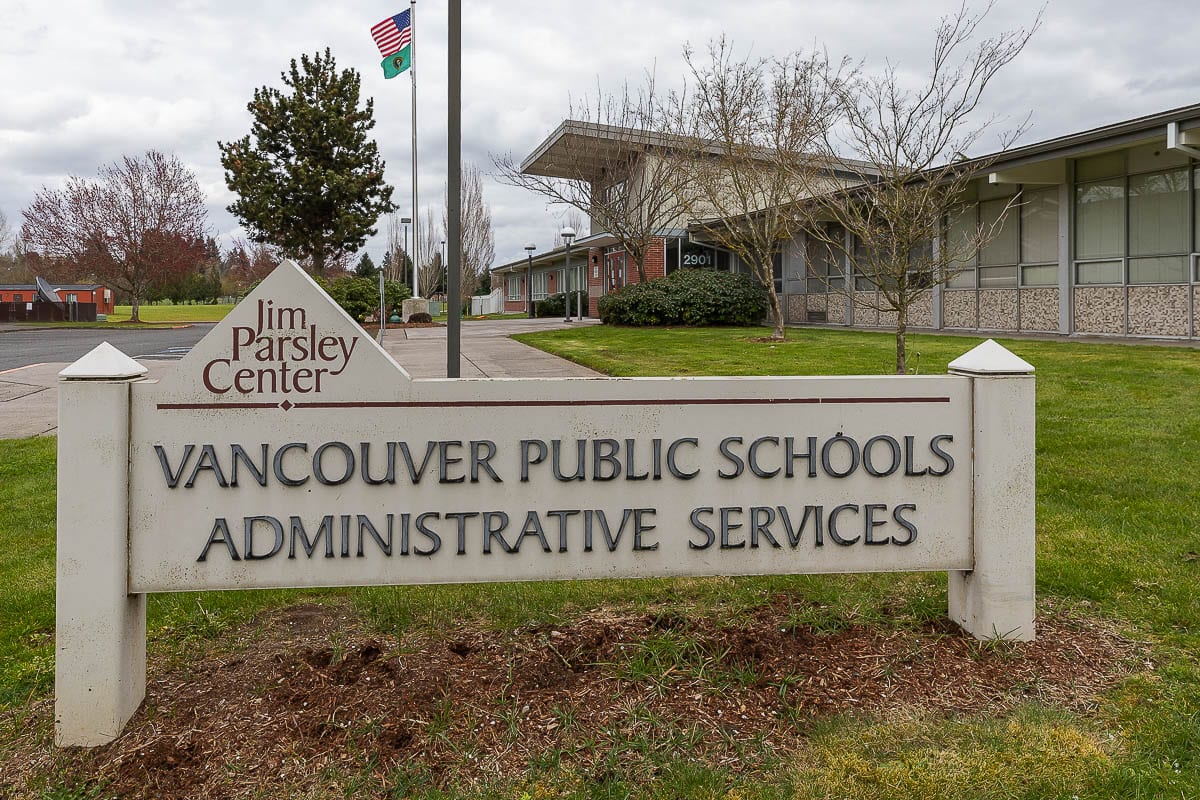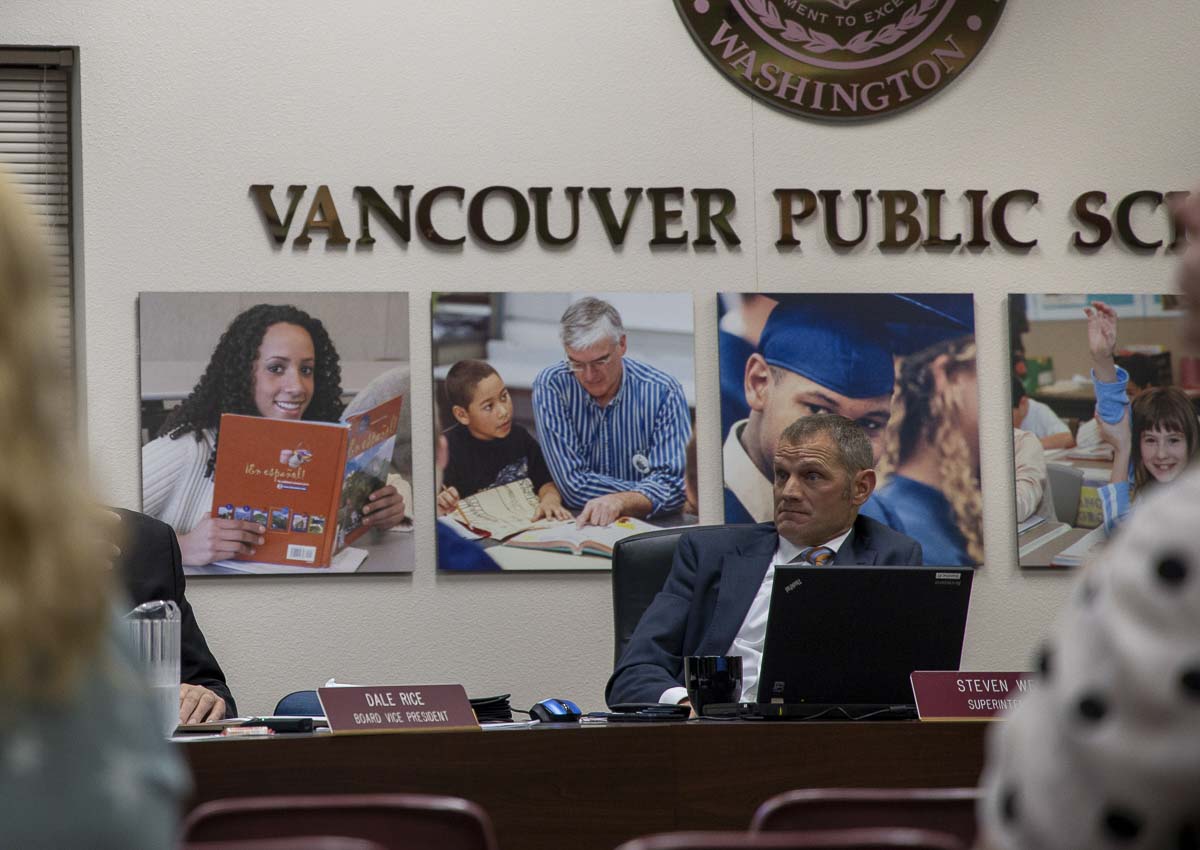The district will expand in-person learning for at risk students next month, with possible expansion to first and second grade in February
VANCOUVER — Even as cases of COVID-19 continue to accelerate in Clark County and across much of Washington state, school districts are growing increasingly restless.
Facing budget shortfalls due to reduced enrollment, lack of food services, and lost transportation revenue, as well as pressure from parents, districts are pushing harder to get more students back in the classroom.
But it is likely to come with pushback from the very people tasked with providing that education.

“I would like to believe that my employer, Vancouver Public Schools, would stand up and be able to say ‘no’ to the pressure to put on them to reopen schools before it is safe to do so,” said Alia Eraky, a kindergarten teacher at Anderson Elementary and a Vancouver Education Association building representative, during a school board meeting on Tuesday.
“Although Washington is still part of a shrinking number of states that has not yet lost an educator to COVID, this is not a cause for celebration,” Eraky added. “That means we have been lucky enough not to become part of that group. Is the district banking on luck to keep us safe?”
Erkay’s comments illustrate the push and pull facing school districts across Clark County.
Parents are increasingly frustrated as more and more students fall behind in classes, or experience severe mental health concerns as online-only education drags on.
The unions representing teachers, however, negotiated agreements with most districts not to begin full in-person learning until case numbers fell back into the moderate risk range for at least three consecutive weeks. That metric was set at 75 new cases per 100,000.
Clark County is currently near six times higher than that.
“Our lives matter just as much as our students’ lives,” Eraky said, who said she was authorized to speak on behalf of many of her colleagues. “We care about them and want them to succeed, but this should not come at a cost to the livelihoods and health of all individuals in the district.”
“I feel our collective pain,” responded Vancouver Superintendent Steve Webb, reading from a written statement later in the meeting. “Public schools, teachers and staff, superintendents and school boards across the nation have been asked to do the impossible; to deliver a high quality education to all students, while ensuring the health and wellness of our children, families and employees.”

Last March, when the state closed schools amid the first wave of the pandemic, school districts scrambled to switch to distance learning. With “hold harmless” standards in place, measuring the success or failure of the system was difficult, but most parents and students weren’t impressed.
Given a Summer to prepare, districts were hopeful that Distance Learning 2.0 would prove more successful. While some students have adapted, many more have not.
At Tuesday’s meeting, the school board heard numbers from the first semester of high school, and they were not encouraging.
The percentage of high school students nationwide with at least one failing grade rose from 31 percent last year, to 49 percent this semester. For bilingual ESL students, the rate went from 34 percent to 64 percent.
“The same trend is true for Vancouver public schools and other Clark County School districts,” said Webb. “Those students farthest from educational justice are being disproportionately impacted by the pandemic and remote learning, in spite of our collective very best efforts.”
In Vancouver, 40 percent of high school students received at least one failing grade, an 18 percent increase from last year.
“That translates to approximately 300 more students in danger of not graduating on time,” said Jim Gray, the district’s director of teaching and learning.
The problem is even more pronounced for minority students, with 48 percent of Hispanic students earning either a D or an F, and 56 percent of Pacific Islander or Hawaiian students, up from 28 and 32 percent respectively last year.
“These are the students not engaging, for whatever reason, in remote learning,” said Gray. “These students simply need the schoolhouse to be successful. At the end of the day, the needs of our most impacted kids has to rule the day.”
Vancouver Public Schools plans to expand the number of students being able to access buildings for in-person instruction starting Jan. 7.
Webb said the goal is to bring first-grade students back to class in a structure similar to kindergarten pods starting Feb. 1, with second-graders returning Feb. 22.
To accomplish that, the district has already begun recalling furloughed classified employees, including many paraeducators, with a plan to have all of them back at work by the end of January.
“Our team is also working collaboratively and creatively to assess how we might better use those educators who would prefer a full remote assignment moving forward,” said Webb, “including those kindergarten teachers that have been forced to take a leave.”
According to Washington Education Association (WEA) President Larry Delaney, in a post on their Facebook page, a proposal to change the metric for in-person teaching from 75 to 200 cases per 100,000 residents in a county was declined by Washington Gov. Jay Inslee.
“The Governor heard us loud and clear that educators, students, and families need assurances that schools are safe and that districts are following all of the required protocols and procedures established by LNI (Labor and Industries) prior to expanding in-person schooling,” Delaney wrote. “We agreed that there needs to be an accountability measure and that labor needs to be a part of determining what is put in place.”
Delaney said WEA is putting pressure on the governor’s office and the Department of Health to include educators among the highest priority to receive a COVID-19 vaccine, once one is available and deemed safe.
Until then, school districts and the teachers that work in them will likely continue to face growing pressure, both internally and externally, to do even more than they already are.
“They are loving seeing those kids, they were giddy the day before,” said District Director Kathy Decker, herself an educator, about kindergarten teachers she’d spoken with. “But they are so tired and so exhausted because of having to also do the remote piece.”
“We gladly give all of our time, energy, attention and devotion to other people’s families every single day,” said Eraky. “But now we are being asked to put other people’s families before our own health and our own family.”
It’s hard to say which side will win out, but as Gray put it after summing up the dismal first semester test scores, “we cannot afford to wait.”




